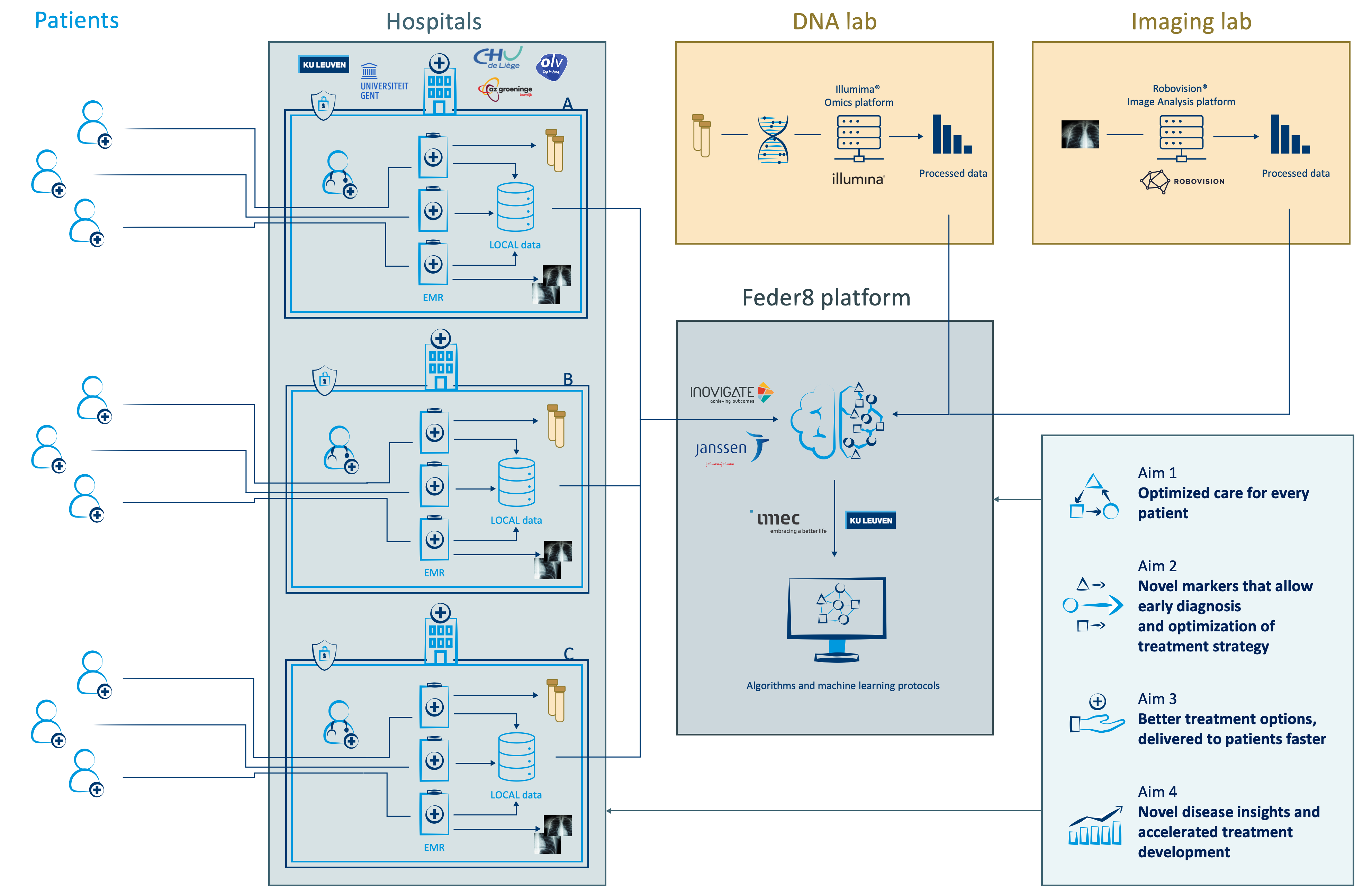How it works
How does ATHENA work?

Step 1. Collection of data on two specific disease cases: bladder cancer and multiple myeloma
Together with the participating hospitals, the members of this project will set up a system in which different types of data will be collected, mainly patient records (information on medical history and past interventions), genomics data and clinical imaging data (such as CT scans and MRI).
As use cases, bladder cancer and multiple myeloma are used. Bladder cancer is defined as tumor development of the bladder lining and/or muscle. Multiple myeloma is a type of blood cancer where the plasma cells in the bone marrow become cancerous.
Do you want to learn more about this first step of the ATHENA project? Take a look at more detailed information of WP1 and WP2.
Step 2. Development of a platform to integrate and process different types of data
During the first step, data will be collected from patients suffering from bladder cancer or multiple myeloma. Beside the clinical data, tumor DNA will be obtained and analyzed by specialized laboratories. In step 2, a platform will be created to integrate these different types of data. The goal is to generate a flexible system, where each task is executed by a functional module, yet integrated to create a manageable and cohesive entity.
Do you want to learn more about this second step of the ATHENA project? Take a look at more detailed information of WP3.
Step 3. Extraction of information from data and generation of insights to improve care
While step 1 provides a biological background for data collection, and step 2 aims to integrate these data in a modulatory and federated platform, it is the aim of step 3 to learn from these data and generate care recommendations that flow back to the hospitals and patients.
Do you want to learn more about this third step of the ATHENA project? Take a look at more detailed information of WP4.
Data security
Importantly, the data will never leave the hospital. Instead of moving the data to be analyzed, the analysis will be performed locally. The patient data thus never leaves the site of care (Hallock et al., 2021).
Project management
Apart from the technical and clinical objectives of this project, it is vital that other aspects of this project are accounted for. Examples are coordination, outreach and management of ethical and legal considerations.
Do you want to learn more about management of the ATHENA project? Take a look at more detailed information of WP5.
EM-103424 | DATE OF PREPARATION: JUNE 2022
